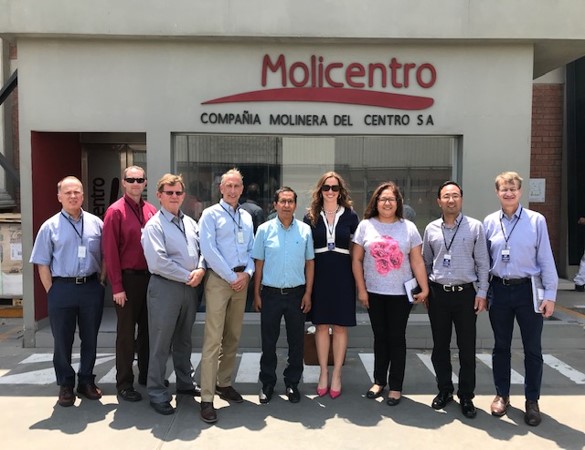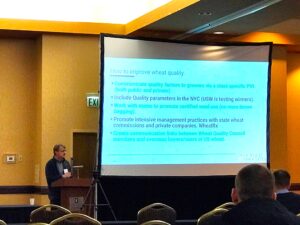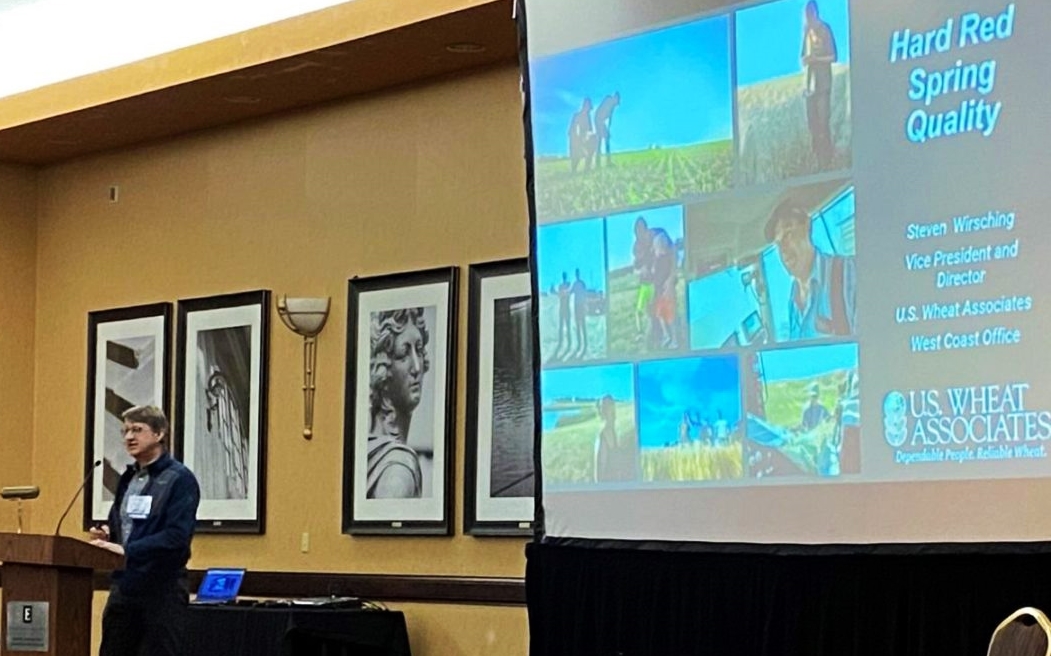Wheat quality improvement is at the heart of the U.S. Wheat Associates (USW) mission to enhance the value of U.S. wheat for overseas customers and profitability for U.S. wheat producers. Improved quality makes U.S. wheat more competitive in global markets and, in turn, increased demand benefits producers at home.
USW cooperates with stakeholders across the domestic and international industries to encourage U.S. wheat quality improvement.
Active Participation
Activities include past Wheat Quality Improvement Teams connecting U.S. wheat breeders with overseas customers to better understand the most important quality characteristics they need. Also, USW is helping fund milling and baking quality testing for entries in the 2022 National Wheat Yield Contest sponsored by the National Wheat Foundation (winning entries must meet specific quality standards). USW also puts wheat quality improvement in the spotlight at producer meetings.

Most recently, USW Vice President and Director, West Coast Office, Steve Wirsching, and Assistant Director Tyllor Ledford participated in a Wheat Quality Council meeting in Kansas City, Mo. This is an annual forum where wheat breeders from the Great Plains states gather to review the latest results of ongoing wheat quality studies.
Honest Evaluation
“It is a challenging task for wheat breeders to develop varieties that deliver higher yields for the producer and better functional quality for end-users,” Wirsching said. “But the data shows they are doing just that. And one reason is breeders hear the honest evaluation of about how the varieties they developed performed in the field at meetings like this.”
At the meeting, Wirsching reviewed how U.S. hard red spring (HRS) wheat quality has trended over ten years using data from the USW Crop Quality Reports that Ledford had prepared. He showed breeders that HRS yields are increasing about one-half bushel per year while also meeting high breeding quality targets for kernel soundness and flour performance.
Moreover, he showed HRS genetic advancements were achieved even across variable growing conditions in the Northern Plains production region of Montana, North Dakota, and Minnesota.
Pushing for Improvement
USW also pushes to improve wheat quality and value by acknowledging areas where breeders can improve quality, such as water absorption. Absorption is an important quality characteristic valued in the export market to help bakers optimize their profits. Wirsching noted that the HRS ten-year crop average water absorption was 63%, which did not meet the HRS breeding target of 64% as measured by the farinograph.
Producers Can Also Help
Producing high-quality, high-performing wheat also takes best management practices on the farm. At the Wheat Quality Council meeting, Wirsching encouraged public wheat industries to develop producer outreach programs like Kansas’s “Wheat Rx” effort. Wheat Rx is a partnership between Kansas Wheat and Kansas State University Research and Extension to share the latest research recommendations for high-yielding, high-quality wheat to Kansas wheat farmers.

Other efforts will include preferred variety lists (PVL), which rank wheat varieties by quality and help wheat producers make informed decisions based on quality outcomes and yield potential.
“Published PVLs are helping improve soft white wheat quality in Washington, Oregon and Idaho,” Wirsching said. “Also, Grain Craft, a private milling company, is now publishing a PVL for hard red winter wheat, which is influencing variety selection in the Central Plains states.”
After attending the meeting, Assistant Director Tyllor Ledford said the Wheat Quality Council is a uniquely collaborative organization.
Building Dependable Value
“Stakeholders like breeders, farmers, millers, bakers, state wheat commissions, and export organizations all come together to pursue a common goal,” she said. “And the product of this cooperation is making quality improvement a priority so that U.S. wheat can remain a dependable value to our customers around the world.”
Future Wheat Quality Council meetings are scheduled to focus on U.S. soft red winter and soft white wheat quality. Look for more information about these and other events focused on wheat quality in future Wheat Letter posts.


